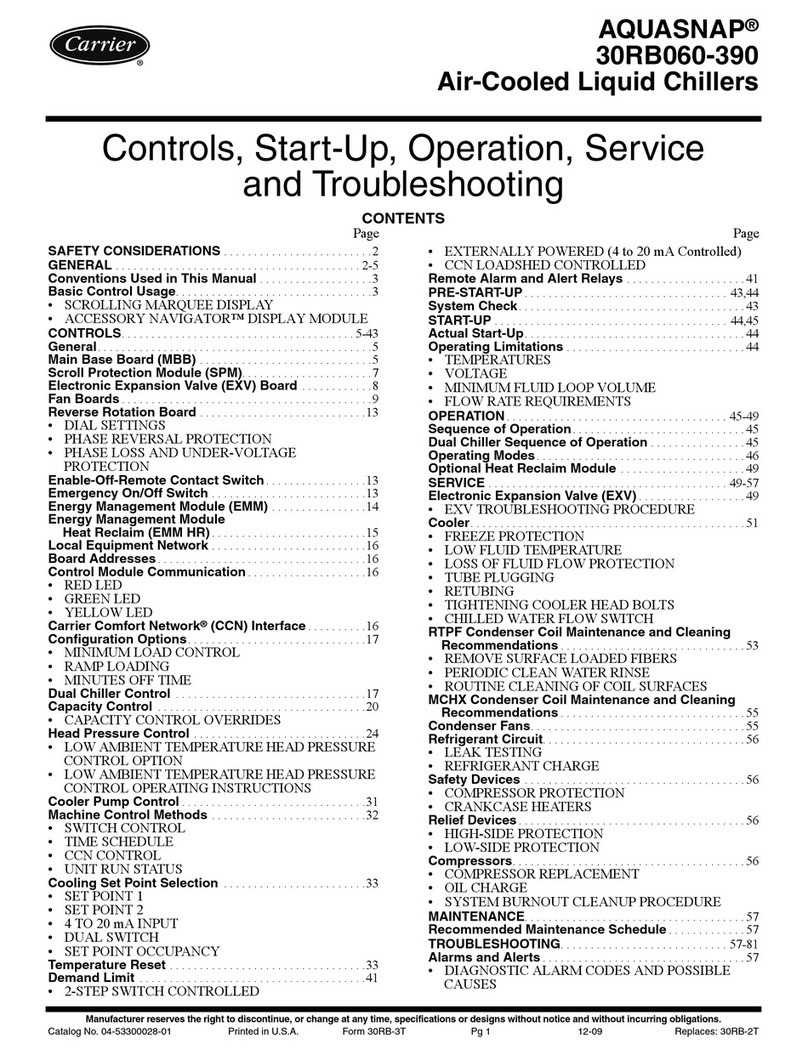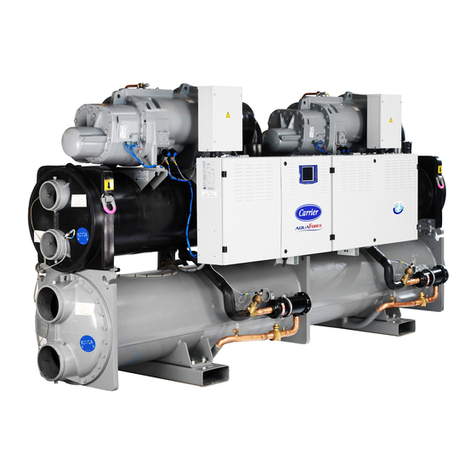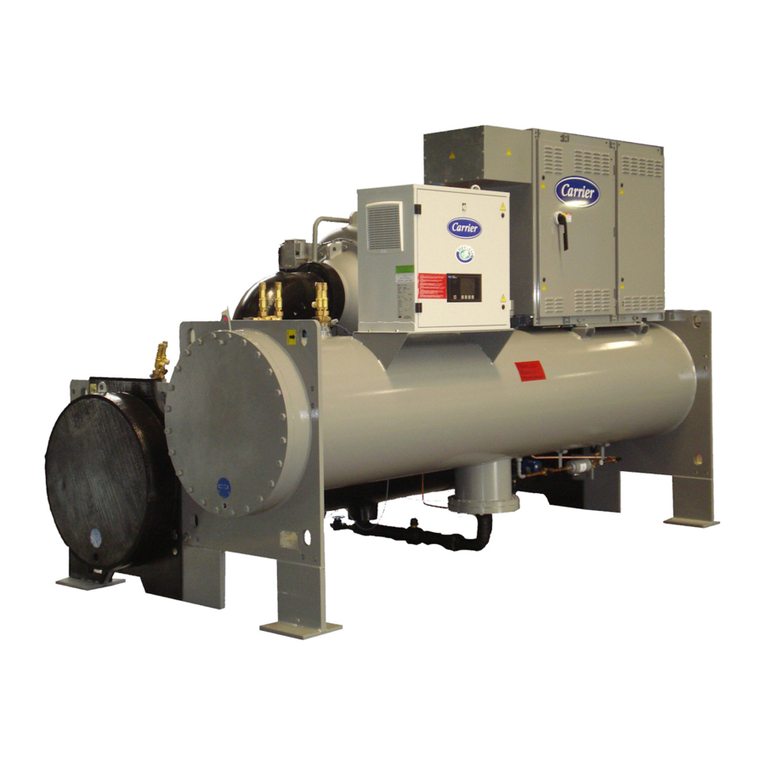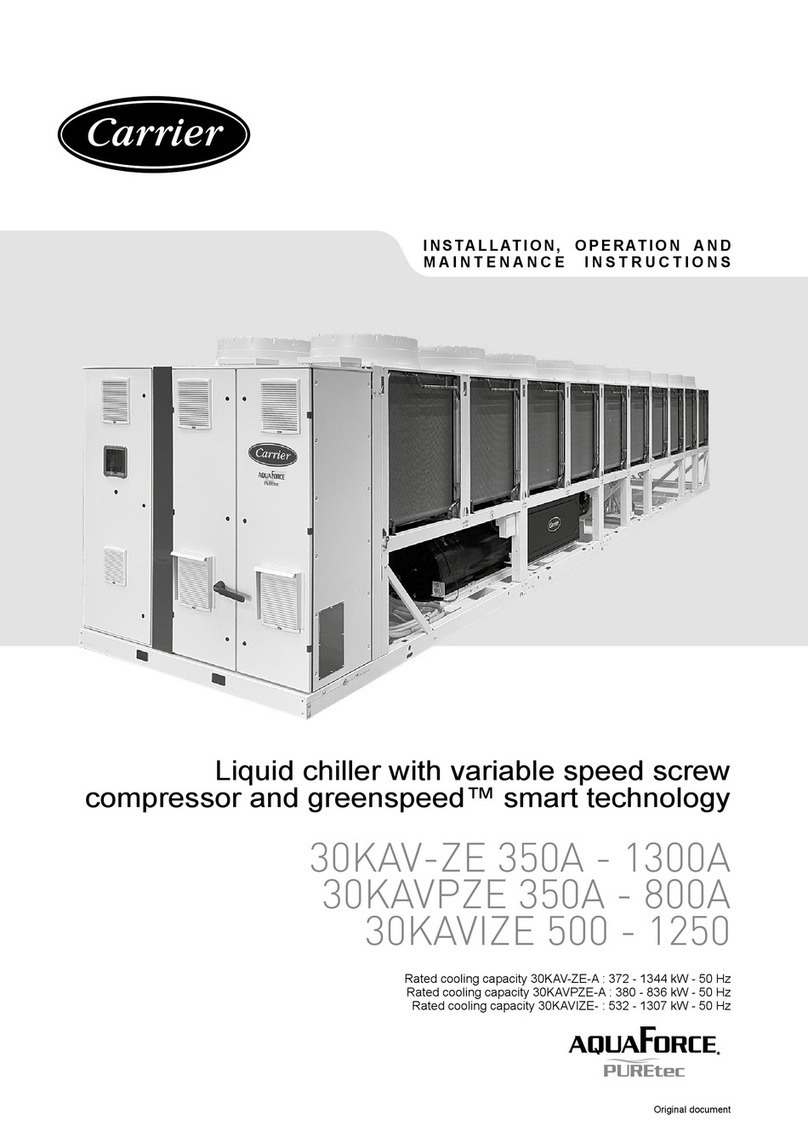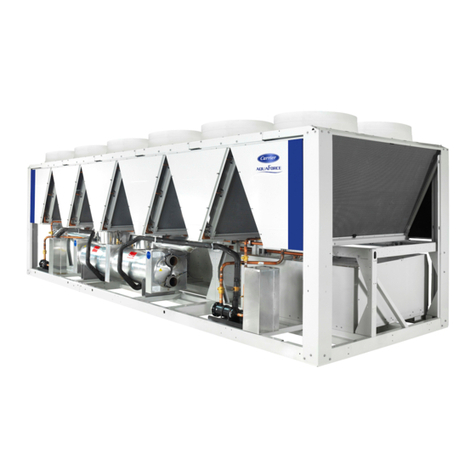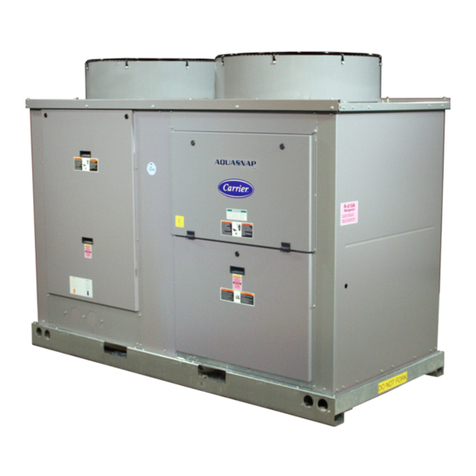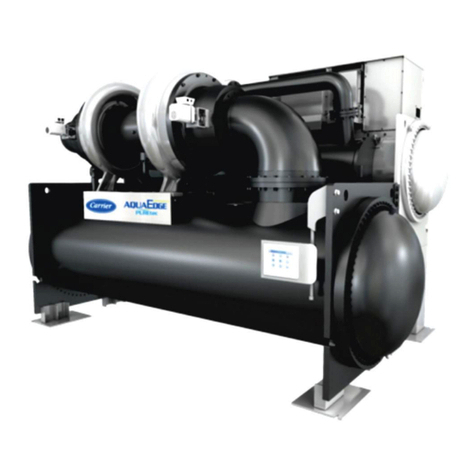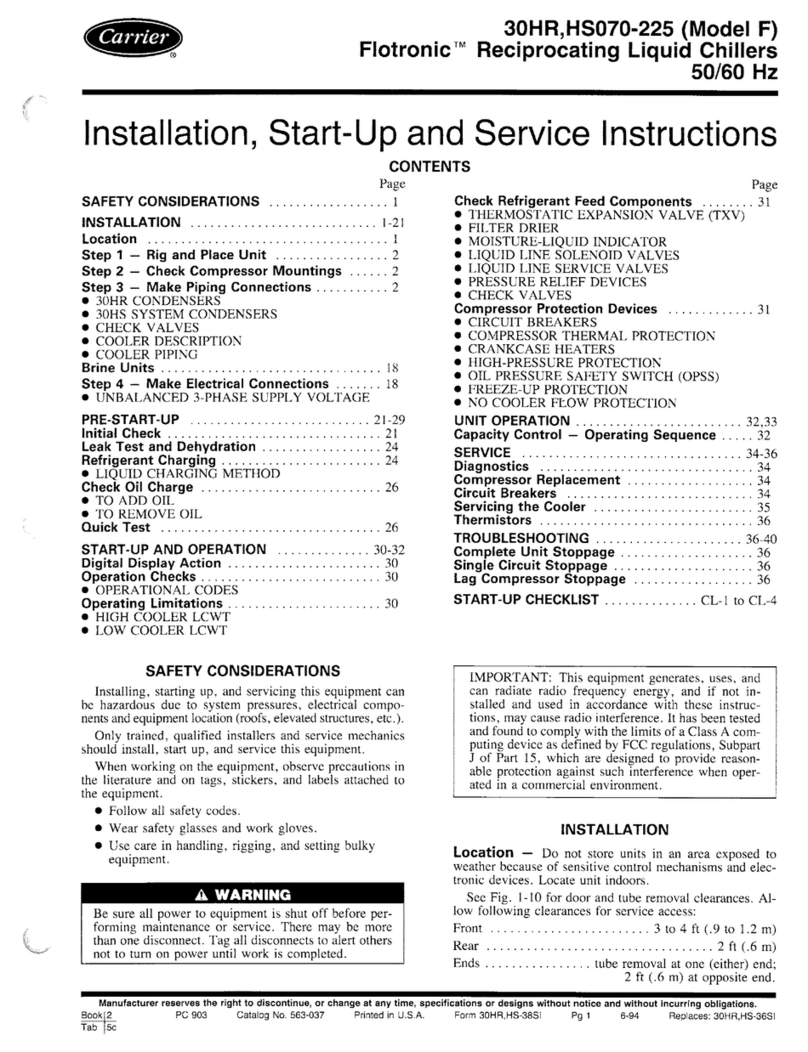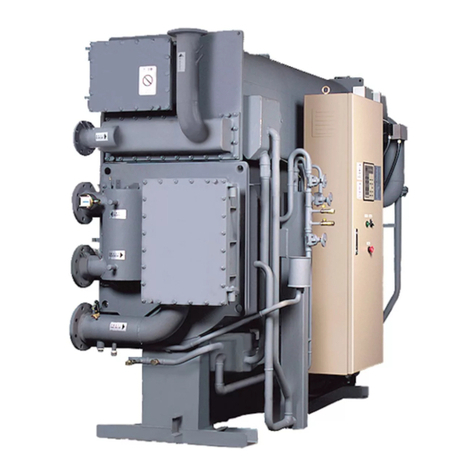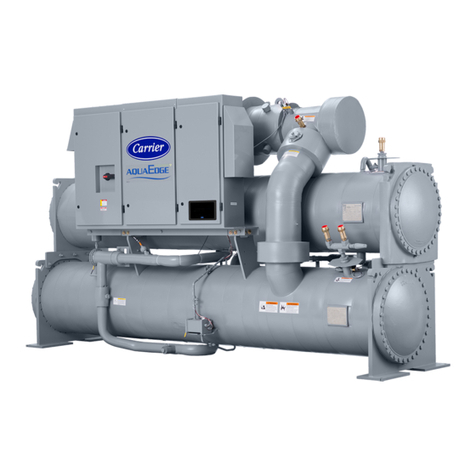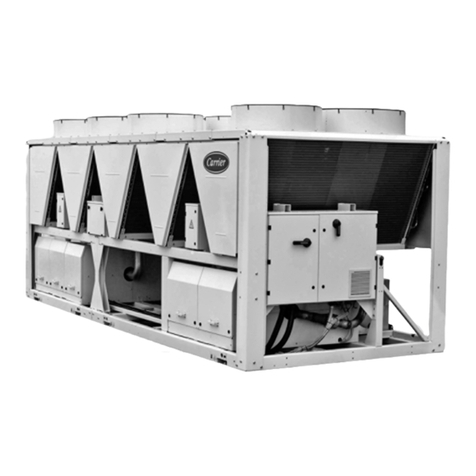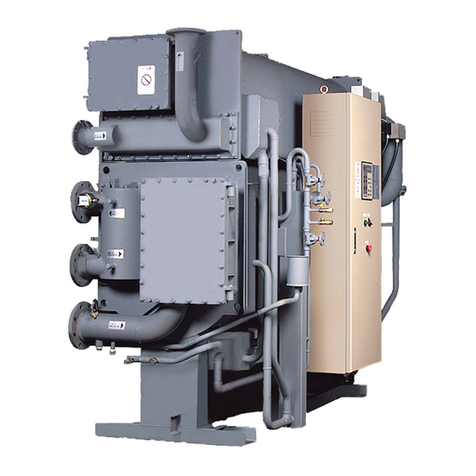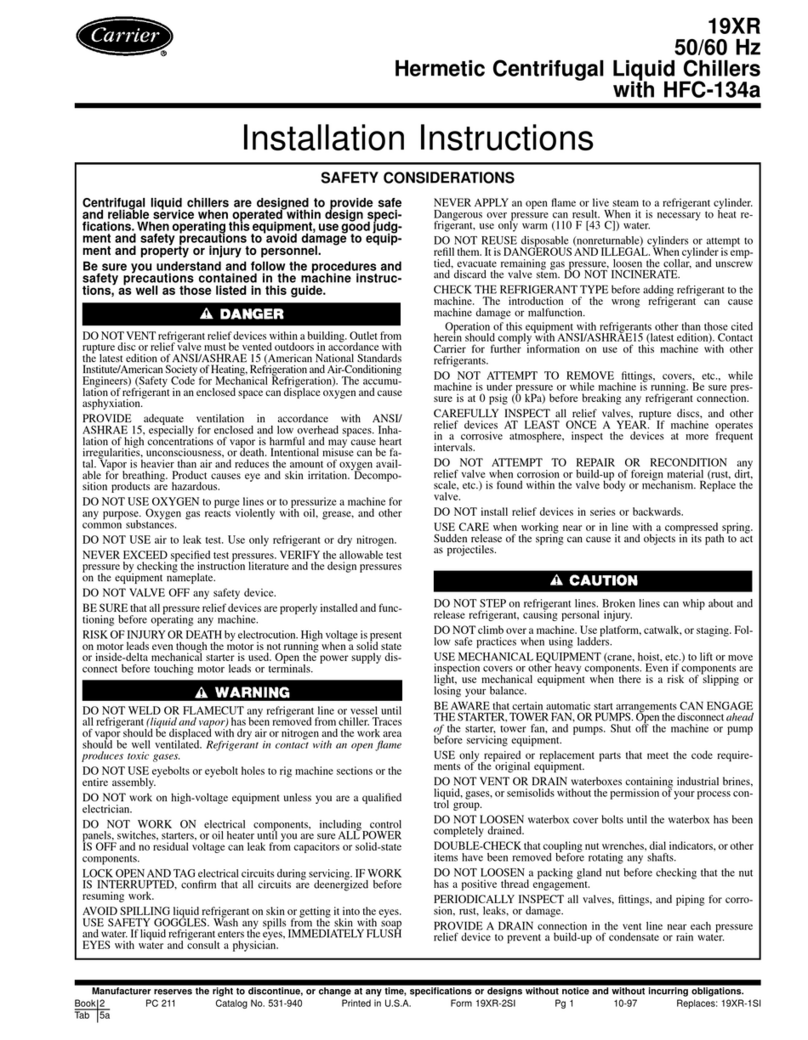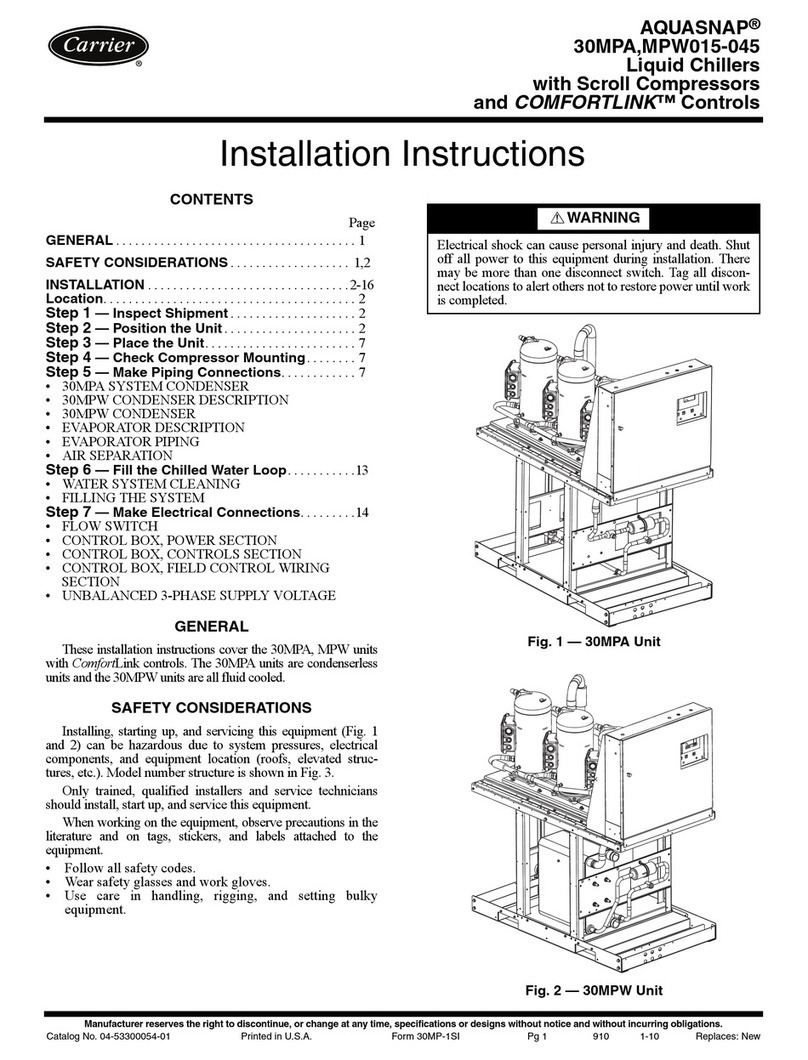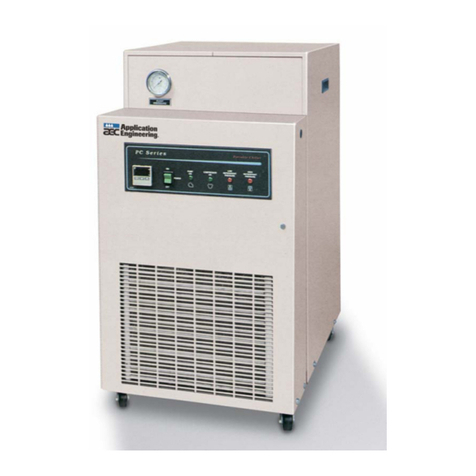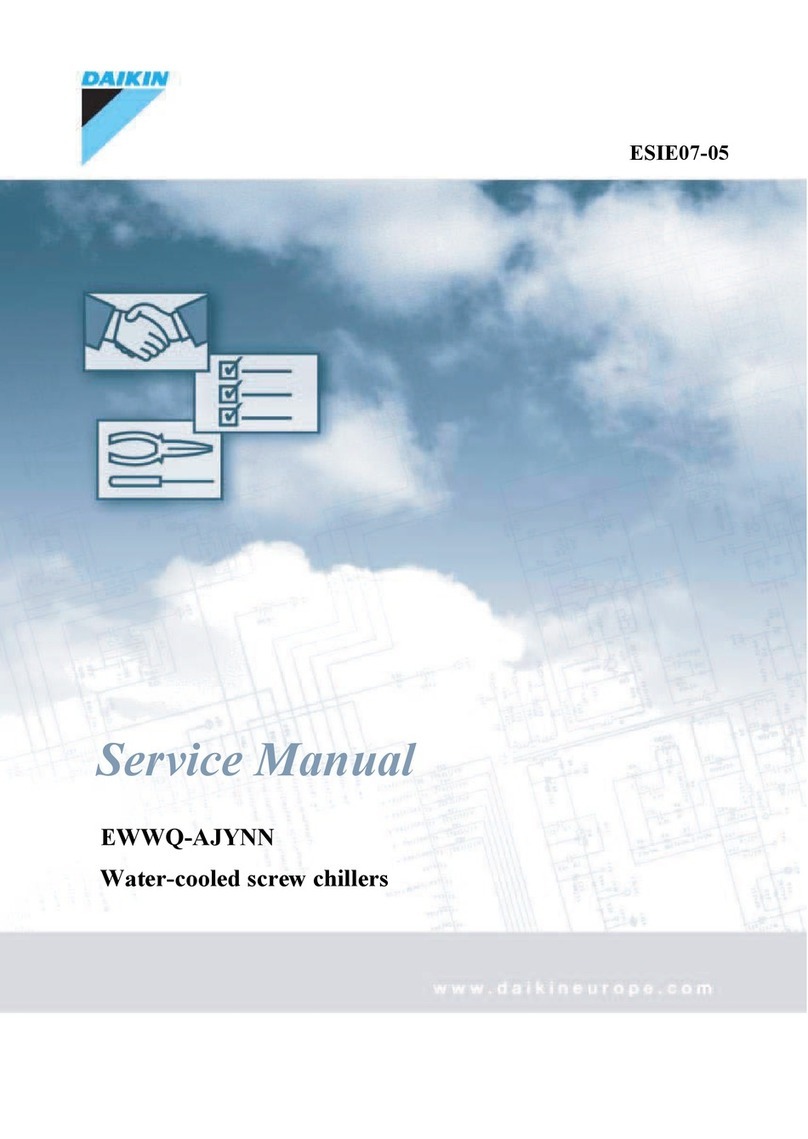
3
GENERAL
This publication contains Controls, Start-Up, Operation, Service,
and Troubleshooting information for the AquaSnap® 30RAP air-
cooled chillers. See Table 1. These chillers are equipped with
ComfortLink controls and electronic expansion valves (EXVs).
Conventions Used in This Manual
The following conventions for discussing configuration points for
the local display (scrolling marquee or Navigator™ accessory)
will be used in this manual.
Point names will be written with the mode name first, then any
sub-modes, then the point name, each separated by an arrow sym-
bol (. Names will also be shown in bold and italics. As an ex-
ample, the Lead/Lag Circuit Select Point, which is located in the
WARNING
DO NOT VENT refrigerant relief valves within a building.
Outlet from relief valves must be vented outdoors in accor-
dance with the latest edition of ANSI/ASHRAE (American
National Standards Institute/American Society of Heating,
Refrigeration and Air-Conditioning Engineers) 15 (Safety
Code for Mechanical Refrigeration). The accumulation of
refrigerant in an enclosed space can displace oxygen and cause
asphyxiation. Provide adequate ventilation in enclosed or low
overhead areas. Inhalation of high concentrations of vapor is
harmful and may cause heart irregularities, unconsciousness,
or death. Misuse can be fatal. Vapor is heavier than air and
reduces the amount of oxygen available for breathing. Product
causes eye and skin irritation. Decomposition products are
hazardous.
WARNING
DO NOT USE TORCH to remove any component. System
contains oil and refrigerant under pressure.
To remove a component, wear protective gloves and goggles
and proceed as follows:
a. Shut off electrical power to unit.
b. Recover refrigerant to relieve all pressure from system
using both high-pressure and low pressure ports.
c. Traces of vapor should be displaced with nitrogen and
the work area should be well ventilated. Refrigerant in
contact with an open flame produces toxic gases.
d. Cut component connection tubing with tubing cutter and
remove component from unit. Use a pan to catch any oil
that may come out of the lines and as a gage for how
much oil to add to the system.
e. Carefully unsweat remaining tubing stubs when neces-
sary. Oil can ignite when exposed to torch flame.
Failure to follow these procedures may result in personal
injury or death.
CAUTION
DO NOT re-use compressor oil or any oil that has been
exposed to the atmosphere. Dispose of oil per local codes and
regulations. DO NOT leave refrigerant system open to air any
longer than the actual time required to service the equipment.
Seal circuits being serviced and charge with dry nitrogen to
prevent oil contamination when timely repairs cannot be com-
pleted. Failure to follow these procedures may result in dam-
age to equipment.
CAUTION
Compressors and optional hydronic system pumps require
specific rotation. For non-HEVCF (high-efficiency variable
condenser fan) units, test condenser fan(s) first to ensure
proper phasing. Swap any two incoming power leads to cor-
rect condenser fan rotation before starting any other motors.
For HEVCF units, check to ensure the supply power phase
rotation is clockwise A-B-C (L1-L2-L3).
CAUTION
Refrigerant charge must be removed slowly to prevent loss of
compressor oil that could result in compressor failure.
CAUTION
This unit uses a microprocessor control system. Do not short
or jumper between terminations on circuit boards or modules;
control or board failure may result.
Be aware of electrostatic discharge (static electricity) when
handling or making contact with circuit boards or module con-
nections. Always touch a chassis (grounded) part to dissipate
body electrostatic charge before working inside control center.
Use extreme care when handling tools near boards and when
connecting or disconnecting terminal plugs. Circuit boards can
easily be damaged. Always hold boards by the edges and
avoid touching components and connections.
This equipment uses, and can radiate, radio frequency energy.
If not installed and used in accordance with the instruction
manual, it may cause interference to radio communications. It
has been tested and found to comply with the limits for a Class
A computing device pursuant to International Standard in
North America EN61000-2/3 which are designed to provide
reasonable protection against such interference when operated
in a commercial environment. Operation of this equipment in a
residential area is likely to cause interference, in which case
the user, at his own expense, will be required to take whatever
measures may be required to correct the interference.
Always store and transport replacement or defective boards in
anti-static shipping bag.
CAUTION
To prevent potential damage to heat exchanger, always run
fluid through heat exchanger when adding or removing refrig-
erant charge. Use appropriate brine solutions in cooler fluid
loop to prevent the freezing of brazed plate heat exchanger,
optional hydronic section, and/or interconnecting piping when
the equipment is exposed to temperatures below 32°F (0°C).
Proof of flow switch and strainer are factory installed on all
models. Do NOT remove power from this chiller during winter
shutdown periods without taking precaution to remove all
water from heat exchanger and optional hydronic system. Fail-
ure to properly protect the system from freezing may constitute
abuse and may void warranty.
CAUTION
Puron® refrigerant (R-410A) systems operate at higher pres-
sures than standard R-22 systems. Do not use R-22 service
equipment or components on Puron refrigerant equipment. If
service equipment is not rated for Puron refrigerant, equipment
damage or personal injury may result.


